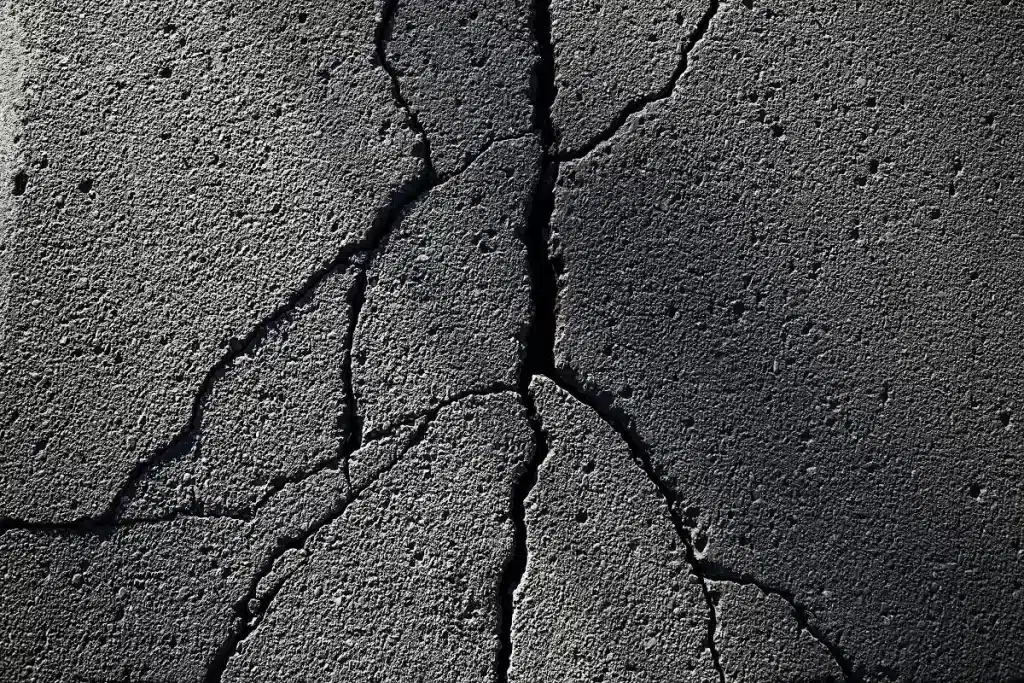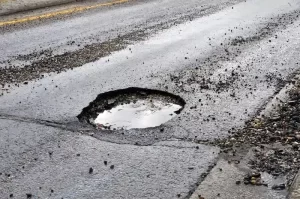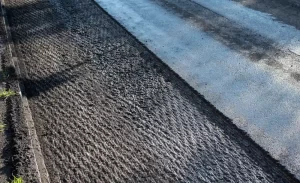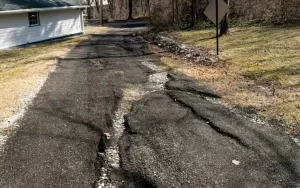The Effects of Winter Weather on Asphalt
Freezing weather will always have a huge impact on asphalt driveways, parking lots, and roads. If any of the surfaces doesn’t receive proper maintenance, it could seriously be degraded by winter weather and have its lifespan significantly shortened. Knowing how winter weather can affect asphalt should provide you with all the information you need to protect it against harsh conditions, so it can last for as long as possible.
Winter installation of asphalt
In general, it’s not a good idea to install any kind of asphalt surface in the wintertime. That’s because in cold weather, the asphalt begins to harden much too quickly. There’s also just not enough time to properly pour and spread the asphalt before it gets way too thick to work with. When the ground is frozen, it can cause the asphalt aggregate to loosen up and even break free. Knowing all this to be true, you’d be well advised to schedule your asphalt project for warmer weather.
Cracked asphalt
No matter how good asphalt is and how well it’s installed, it simply will not be immune to cracking in the cold temperatures of winter. The ground will expand and contract, and go through a number of freezing and thawing cycles during wintertime. In addition, heavy snows and melting snows will cause additional expansion and contraction, and that will cause any underlying asphalt to experience cracking.
Asphalt sealcoating
To prevent cracking as much as possible, asphalt sealcoating should be applied every two or three years to your driveway or other asphalt surface. However, it will be necessary to apply this coating in temperatures of 50°F or above, because the cold temperatures of winter will simply cause the sealcoating material to become too thick to work with. If you can get a good coat applied during summertime, it will protect against moisture, oil, chemicals, and wintertime cracking to a huge extent.
Water intrusion
This is one of the biggest concerns with asphalt, both due to summertime downpours and wintertime snowfalls. Anytime that cracks begin to form on the surface of the asphalt, water will be able to penetrate down into the lower confines of the material. This will promote erosion from within, deepening the cracks, creating potholes, and if left untreated, possibly causing total failure of the asphalt.
Winter asphalt repairs
It’s not really feasible to carry out long-lasting asphalt repairs during the wintertime, because they just won’t last, given the freeze and thaw cycles which occur. However, many problems can be corrected in the springtime, as long as the damage has only been moderate. At this time, you’ll have the option of milling off a few inches of the top layer, cleaning out the hole, and then pouring in fresh asphalt and leveling it off. When your asphalt suffers severe damage in the wintertime, your best option is usually to make use of dig-out patching. This involves removing and replacing the entire section of damaged asphalt, and although it’s a pricey approach to consider, it’s still much less expensive than a complete reinstall of your asphalt surface.
Cold-patching asphalt
As soon and any cracks appear in your asphalt surface, it’s a good idea to address them as quickly as possible, because they will always worsen over time. Any major repair has to wait until springtime, but you can do some cold-patching even in winter, because it doesn’t rely on the temperature of the air or the ground. Small cracks or potholes can be filled as soon as you notice them, but keep in mind that you will have to redo those patches when the temperature warms up, because they’re only meant to be a temporary fix.







